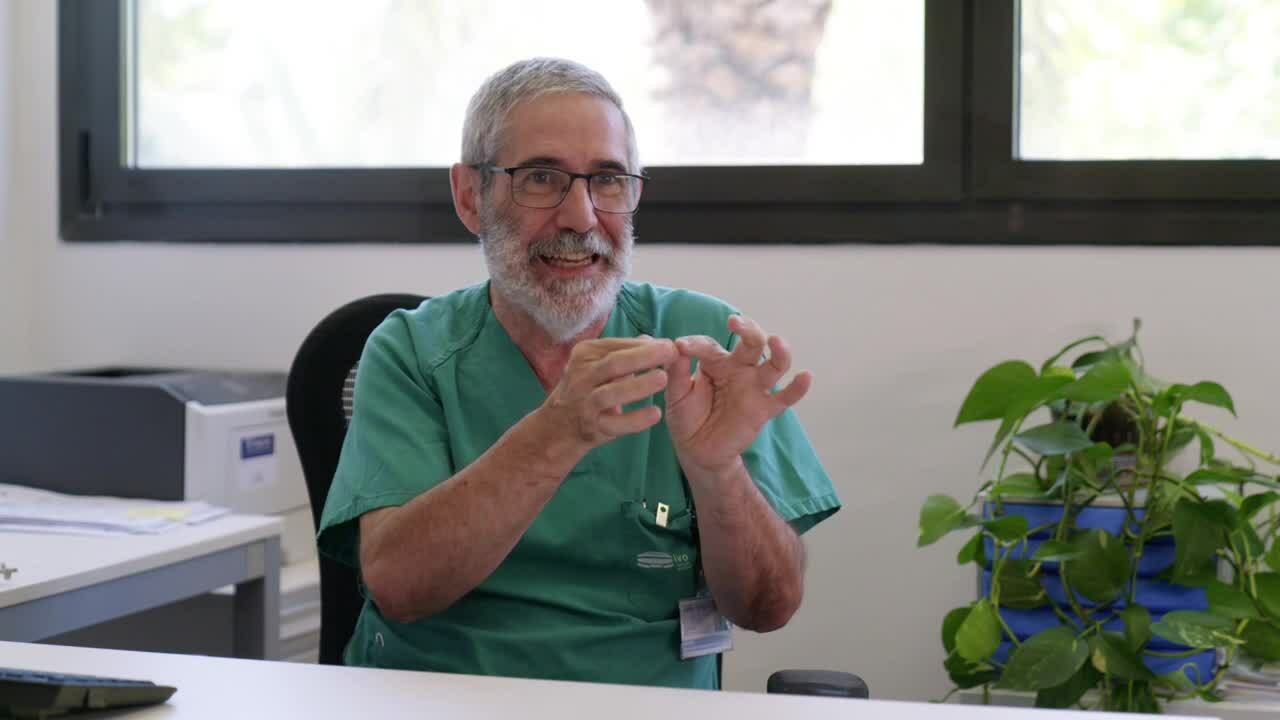
Brachytherapy, how this cancer treatment works and its benefits
Healthcare Perspective
Dr Guinot
In this video, Dr Guinot, Physician at Fundación Instituto Valenciano de Oncología in Valencia broadly describes brachytherapy, its benefits and how it is used to treat cancer over external radiation therapy by treating small areas with higher doses.

What is brachytherapy treatment?
Often being diagnosed with cancer can be an overwhelming experience for both the patient and their loved ones. We understand how difficult it can be to ask the right questions and to learn about cancer treatments, brachytherapy, and who to ask as part of the health care team.
To help patients and their families understand more about brachytherapy, Dr José Luis Guinot, a physician at Fundación Instituto Valenciano de Oncología in Valencia, Spain, recorded this video. It describes what brachytherapy is, its benefits, and how it offers a more precise form of treatment over external radiation therapy by treating small areas with higher doses.
Brachytherapy is radiation therapy
Brachytherapy radiotherapy is an important method of treating cancer. It works by destroying cancer cells by targeting the tissue with radiation and stopping them from dividing and growing. Approximately 4 out of 10 people with cancer have some type of radiotherapy as part of their treatment.
Brachytherapy is a type of radiotherapy that can be used to treat many types of cancer. It is sometimes known as 'internal radiation therapy' because it involves placing radioactive material where the tumor is, or was if it has been surgically removed. Unlike external radiation therapy, which can only give a lower dose of radiation because it reaches healthy tissue too, brachytherapy is able to give a higher dose at one time, making treatment time shorter.

How brachytherapy works
Brachytherapy works by placing a source of radiation directly in or next to the cancerous tumor inside the body to kill cancer cells via radiation.
The insertion process can involve needles, tubes, or applicators where the radiation is needed and reduces the impact on healthy tissue. Unlike external radiation therapy, this internal radiation only targets cancerous cells and can be incredibly precise.
When treating prostate cancer, the doctor will place radioactive seeds within the prostate. The radioactive material then dissipates over several months, ensuring long term treatment for prostate cancer with minimal disruption and fewer appointments.
For other types of cancer, the brachytherapy technique uses a small tube, less than a millimeter thick, which is inserted at the cancerous site. This tube has a metallic tip with radioactive material, which enables the radiation oncologist to place the treatment exactly where the cancer is, with a margin of error of less than half a millimeter.
Advantages of brachytherapy
One of the great advantages of brachytherapy is that it allows doctors to treat cancer in very small areas with very high doses. This allows the radioactive material to precisely target the tumor and ensure it receives the most effective dose to kill the cancer cells. This tailored approach also reduces the risk of any unnecessary damage to healthy tissue and organs that are close to the tumor.
Unlike other cancer treatments, brachytherapy enables body tissue to be preserved and depending on the type of cancer it can be used in combination with hormone therapy and other treatment options.
Using Elekta machines, the imaging tests can be done in the same room as the brachytherapy treatment session which reduces session length and keeps the patient in the same hospital room to feel comfortable.
Brachytherapy and comfort
Brachytherapy can be uncomfortable when inserting radioactive material. Our teams will work with you to effectively numb the area and reduce the discomfort as much as possible, ensuring this internal radiation therapy is effective and painless.
The brachytherapy itself is not painful and lasts only minutes. This may occur a couple of sessions a day or every other day, depending on the cancer treatment plan. Patients are able to go home in between, with minimal side effects. The medical team will let patients know what their schedule will look like.
Browse our site for more information about specific cancer treatment, patient guides, videos from real brachytherapy patients and more.
Watch the testimony of Dr Luca Tagliaferri of Fondazione Policlinico Universitario “Agostino Gemelli” IRCCS in Rome, Italy, which outlines his thoughts on brachytherapy treatment.
